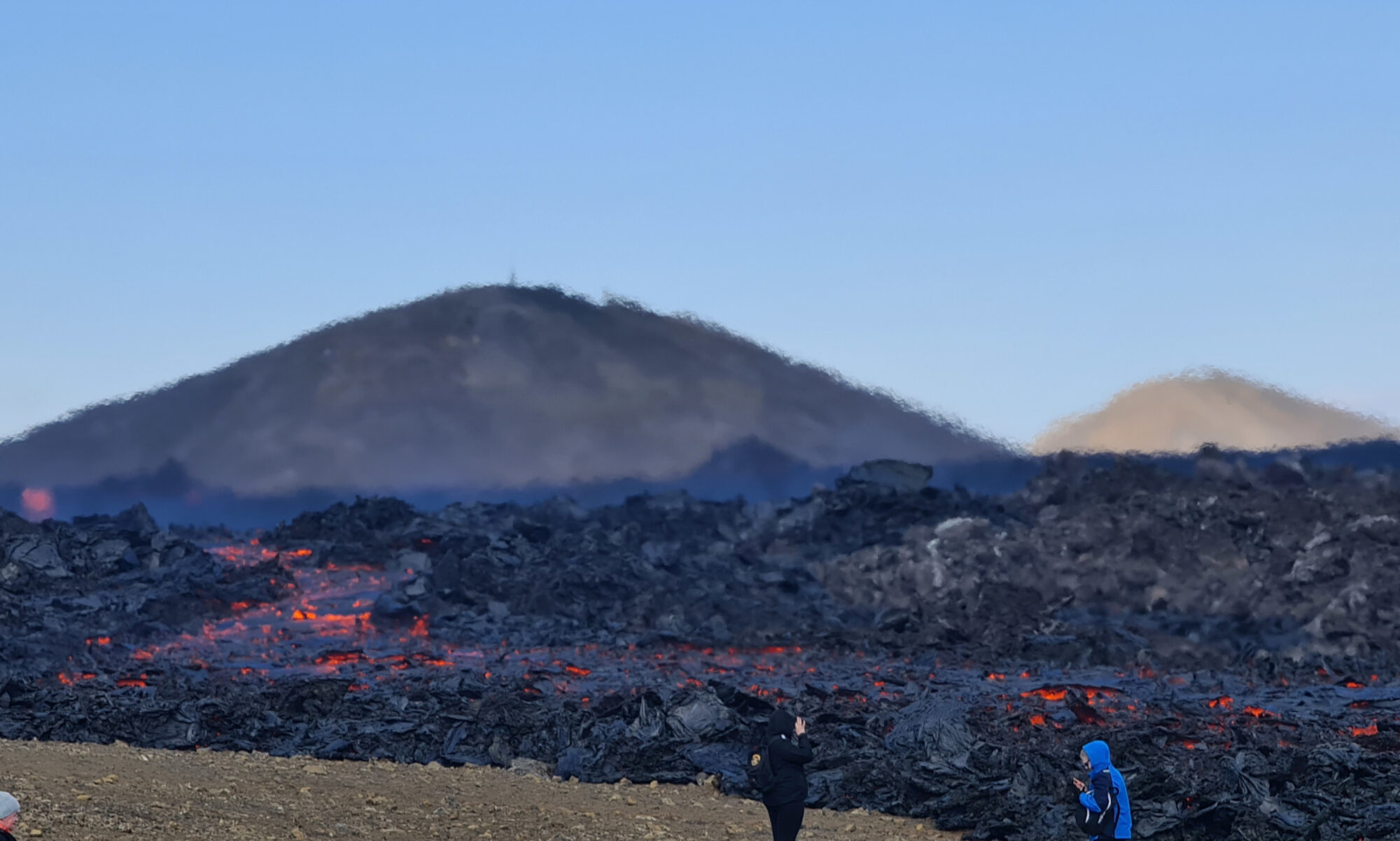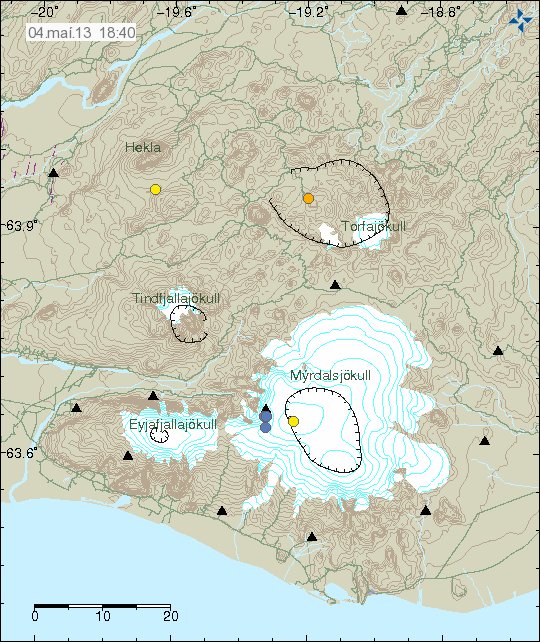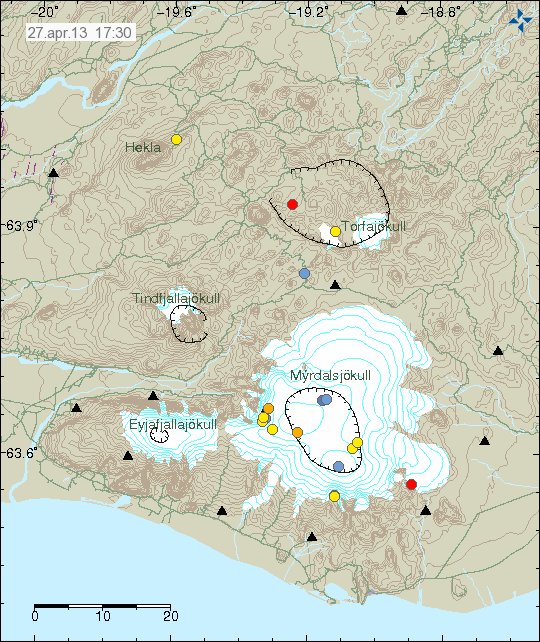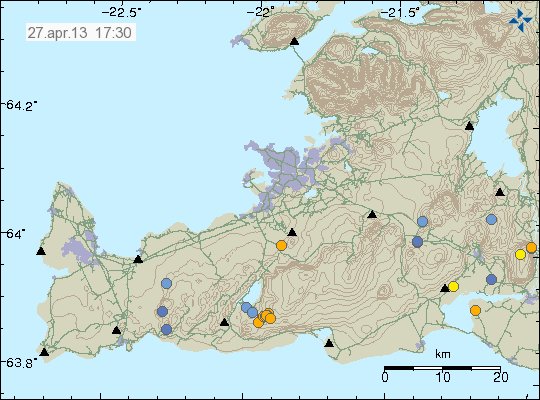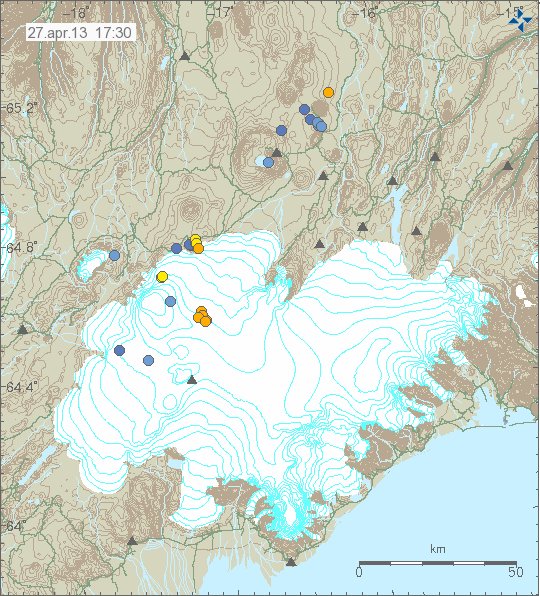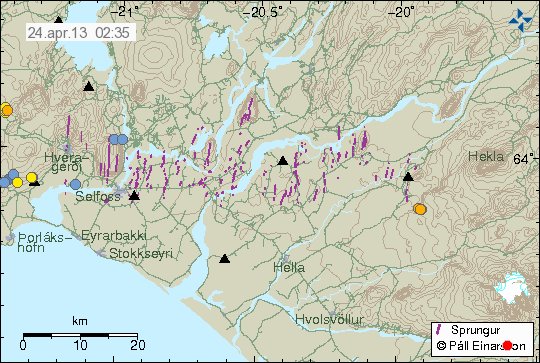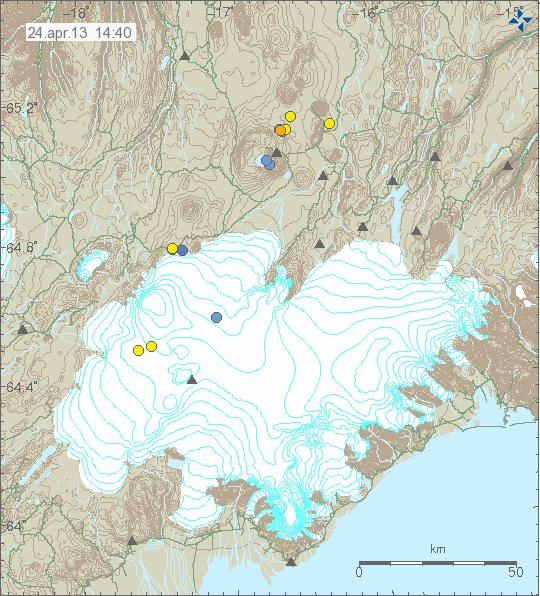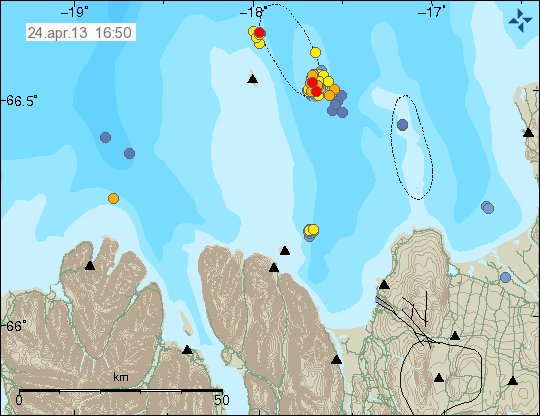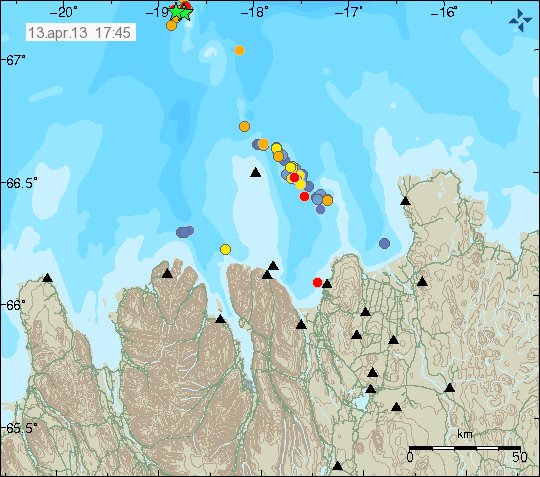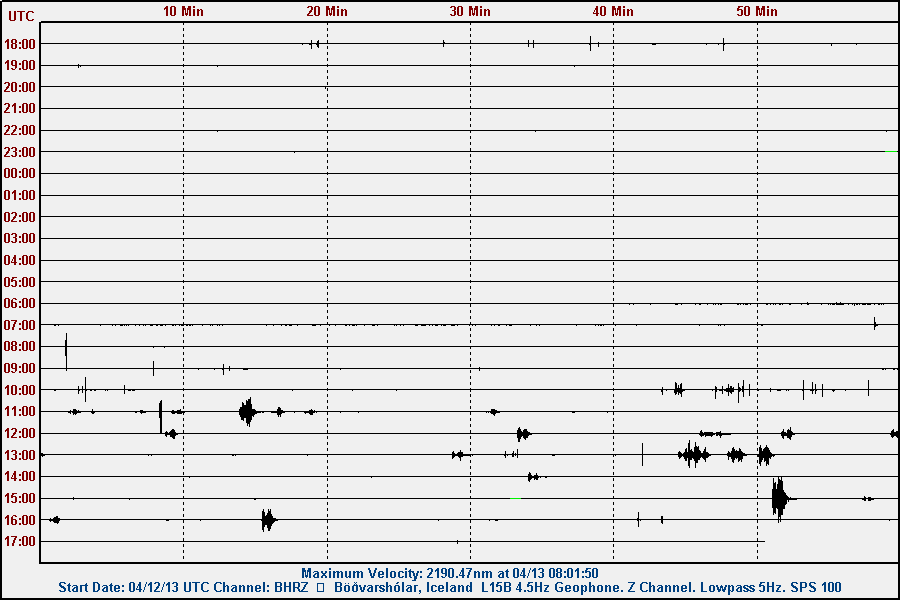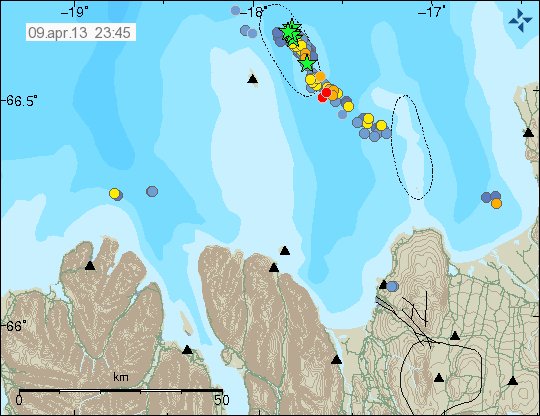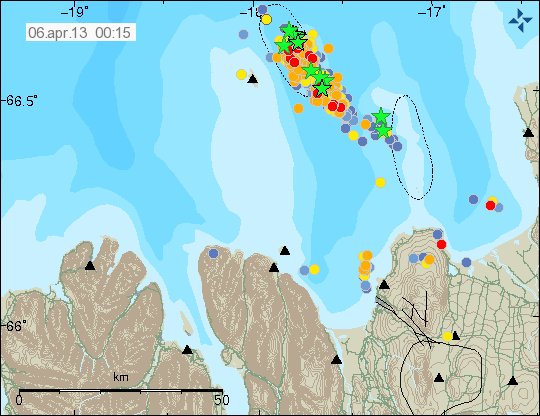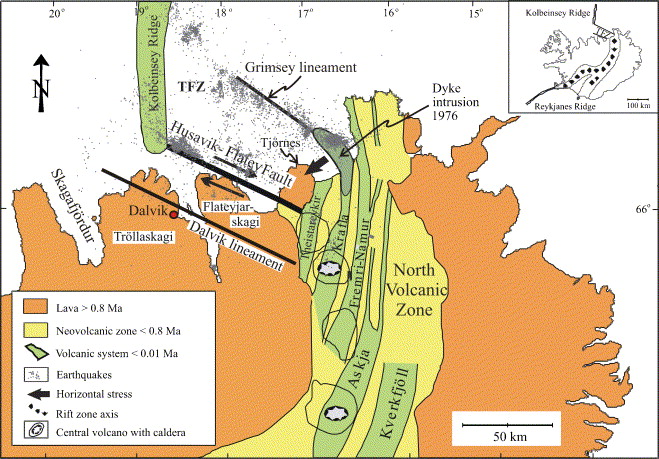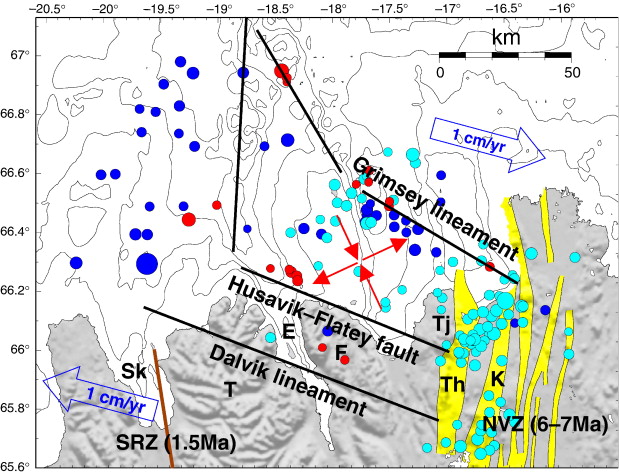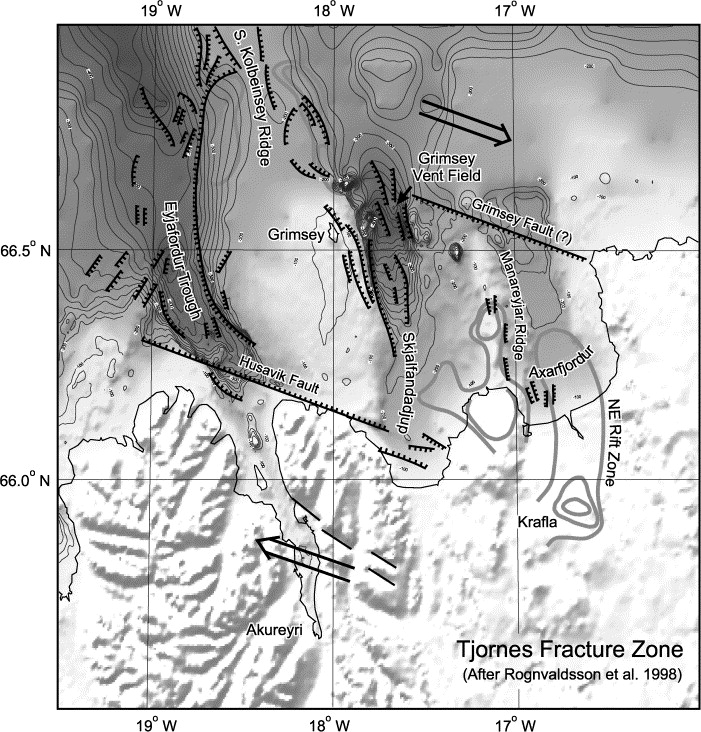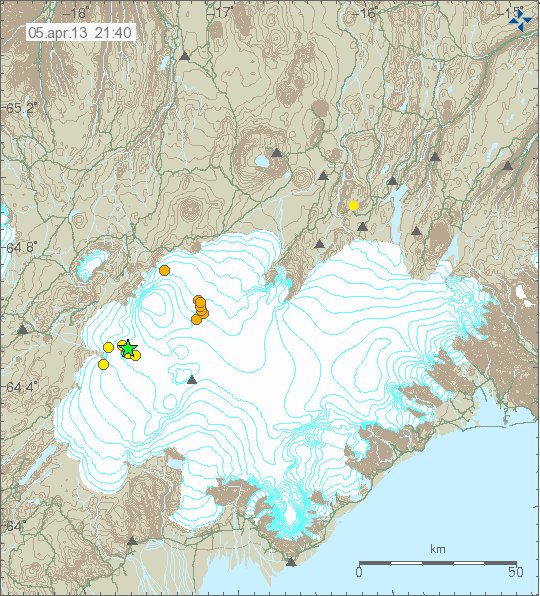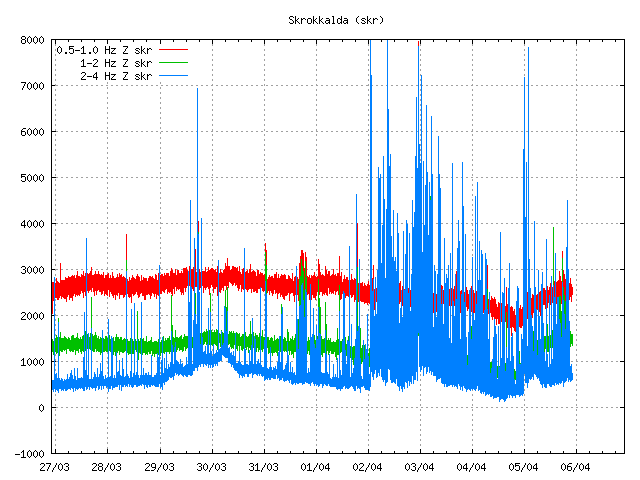Last night a earthquake swarm started on the Reykjanes Ridge, this earthquake swarm started slowly with just few minor earthquakes. It however did pick up later today with stronger earthquakes and more activity. Strong earthquakes in this swarm so far have had the magnitude 4.5 and 4.7 according to USGS/EMSC. There have been over 10 magnitude 3+ earthquakes, there is also a chance of more earthquakes with the magnitude above 4.0+ in next few hours to days. According to Icelandic Meteorological Office, there have been over 310 earthquakes in this area today (my counter is still offline, more on that later in this blog post).
This earthquake swarm has been showing the pattern of stopping and then continue for few hours, and repeating this pattern. This sometimes happens in earthquake swarms on the Reykjanes Ridge, why that is I do not know. Last eruption in this area was sometimes on the 18th or 19th century I think. If this activity is connected to volcano activity it is too early to know at the moment, at the moment there is nothing that suggest that is the case. That might however change without a warning if that is the case. This volcano is located out in the ocean, so it is poorly monitored so current status of it is impossible to know for certain. Currently there are no harmonics being detected, just normal earthquake activity and nothing else.
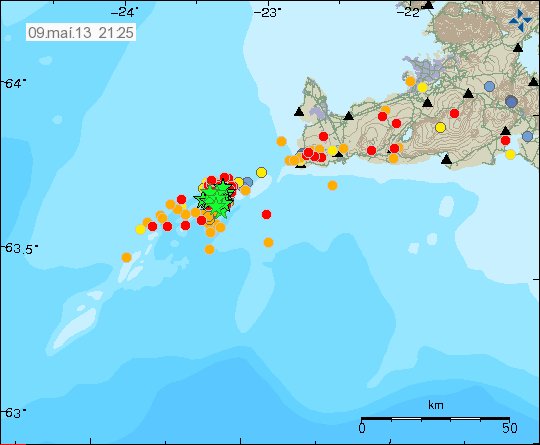
Earthquake swarm on the Reykjanes Ridge. Copyright of this image belongs to Icelandic Meteorological Office.

Trace showing how the evolution of the earthquake swarm has been for the past few hours.Copyright of this image belongs to Icelandic Meteorological Office.
It is difficult to know for sure what happens next in this earthquake swarm. It is clear for the moment that this earthquake swarm is in full force as is, so more earthquake activity is to be expected. This earthquake activity can be monitored here, on my webicorder web site. It is updated every 5 min.
Other
I am sorry for this late blog post, but I always use some time to see how earthquake swarm evolve and what happens in them before I write, unless there is a really big earthquake with magnitude 50 or larger.
I have also been busy today trying to get my server computer back up and running, it has been working somewhat but I had to start from scratch again due to technical issues with few things. I am running FreeBSD on my server computer now. Since I am moving away from Linux solutions and it has been more of a challenge then I expected. I hope to have everything worked out now, so I hope to have my server computer up and running properly tomorrow. Since I know what I did wrong first time around and I did avoid it this time around, so I am not expecting any problems in setting up FreeBSD properly this time around.
I also want to point out that donations help me running this blog, since my financial status is not as strong that I wanted it to be. Thanks for the help.
Blog post updated at 13:26 UTC on 11. May 2013.
